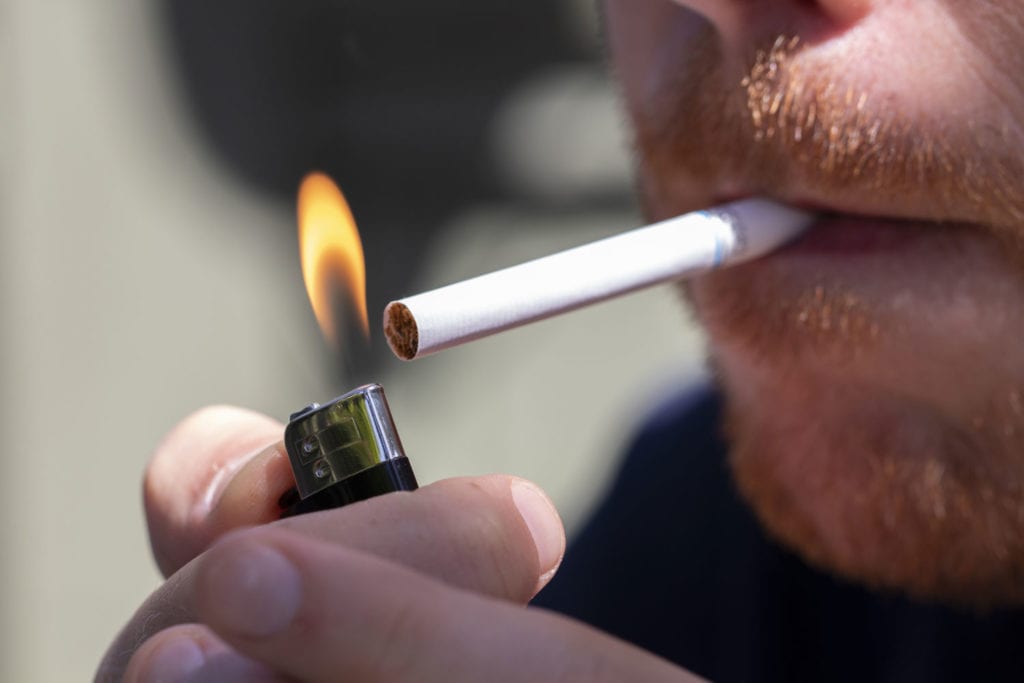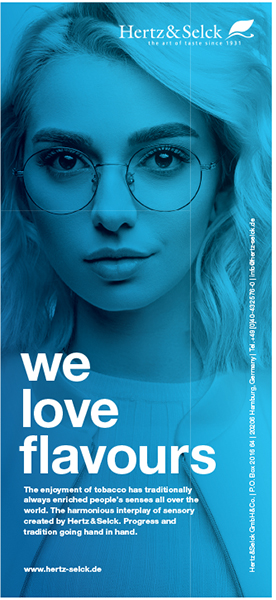Damage Done
- Also in TR Print Edition
- September 1, 2020
- 0
- 0
- 13 minutes read


Even as last year’s EVALI crisis has abated, the misperceptions it created about vaping persist.
By Stefanie Rossel
Roughly a year ago, a mysterious lung illness struck thousands of U.S. vapers. Emergency room visits increased from July 2019 and peaked in September before ebbing off. By Feb. 18, 2020, 68 people had died from complications of the lung disease, which was quickly termed EVALI—“e-cigarette, or vaping, product use associated lung injury.”
However, EVALI turned out to be a misnomer, and the mystery surrounding vaping illness was quickly resolved—although some experts took longer to recognize the obvious than others. As the Centers for Disease Control (CDC) eventually acknowledged, illegal THC-containing vapor cartridges, also known as carts, were the true cause of the vaping-related illness. They contained a new thickening agent, vitamin E acetate oil, that was used as a diluent for tetrahydrocannabinol (THC), the psychoactive substance in marijuana. By destroying the surfactant, vitamin E acetate oil prevents the lungs from working properly. In addition, when heated, the agent can form a toxin that affects the respiratory tract.

“It is important to note that vitamin E acetate, a component found in illegal black market THC cartridges, was identified by the CDC as a primary cause of EVALI—and not nicotine vapor, contrary to what was portrayed by the media,” stresses Tony Abboud, executive director of the Vapor Technology Association (VTA). “Industry standard FDA-regulated nicotine-containing vapor products were not involved, much less to blame for cases of lung illnesses in September of 2019.”
Professor Michael B. Siegel from the Boston University School of Public Health was one of the first to hint at the fact that bootlegged e-liquids containing THC were likely to be the origin of the vaping-related illnesses and deaths. One year after the height of the crisis, he says, EVALI is no longer an issue. “Shortly before we all got distracted by Covid-19, we were already seeing a dramatic decline in EVALI cases. At this point, the outbreak seems to be over. Apparently, the use of vitamin E acetate oil as a thickening agent in THC vape cartridges has been discontinued and by now the remaining carts in the supply chain have been through the life cycle, so the problem is essentially over.”
Long-term impact
But while the illness may have gone away, the impact of the way in which U.S. health authorities handled the crisis lingers on. From September 2019, the two U.S. leading health authorities, the Food and Drug Administration (FDA) and the CDC, issued contradicting advice. The FDA warned against vaping THC purchased from informal sources. The CDC, by contrast, didn’t publicly single out illegal THC liquids as the probable cause of EVALI until November 2019 and continued to caution against vaping all e-cigarettes until January 2020. There has been no official rehabilitation of the legal vapor business, and the sector continues to suffer from an underserved blemish.
“Unfortunately, and quite sadly, the discovery and confirmation that vitamin E acetate oil thickener was the cause of EVALI has had virtually no impact on the communications that are coming from most state health officials and local health agencies and organizations,” says Siegel. “Very few, if any, state health departments put updates on their websites notifying consumers that the problem was discovered and that THC carts, not e-cigarettes, were found to be the problem. Massachusetts is a great example. The Massachusetts Department of Public Health—to this day—maintains the position that we have no idea what caused the outbreak. It has not corrected its errant and premature conclusion that this was due to e-cigarettes. And it has not issued a clear statement clarifying that the cause was THC vape carts. The majority of the public still believes that e-cigarettes were causing EVALI and have no idea that it was THC vape products.”
This misperception continues to plague the sector today. “The vape market has been under near-constant attack from organizations that fail to recognize the extensive body of science that points to black market THC being the source of the EVALI lung disease,” says Abboud. “Both the FDA and CDC have come to this same conclusion. The damage to the public consciousness that this false narrative perpetuated has caused states to move towards banning some or all nicotine e-cigarettes. Also, some state officials have improperly used the EVALI issue to claim that certain flavored nicotine vapor products should be banned even though there was zero association between flavors and any EVALI case. These actions have had a negative impact on the vapor market and have scared adults back to smoking. Not only does this harm the health and well-being of consumers, but it also has devastating economic impacts.”
An excuse to crack down

In the wake of the EVALI outbreak, several states and cities have proposed or enacted e-cigarette and flavored e-liquid bans. “Once again, knowledge of the true cause of the EVALI outbreak had no effect in changing public policy,” says Siegel. “All of the states that enacted emergency bans on e-cigarettes or flavored e-cigarettes because they suspected these products were involved continued to implement these bans after it became clear that e-cigarettes played no role. It is as if the science doesn’t matter at all and policymakers simply enact the policies they want regardless of what the science shows or the actual health impact will be.”
According to Abboud, states continue to create arbitrary and misguided measures to ban flavors for vapor products without addressing marketing issues. “For example, New York left all flavored combustible products on shelves while going after flavored vapor products even though the New York State Department of Health did not find any presence of vitamin E acetate in the nicotine products they tested,” he says. “Opponents of vaping have seized on the EVALI crisis to redouble their efforts to ban flavors despite there being no logical, much less scientific, connection between EVALI and flavors.” Abboud is convinced last summer’s crisis has set off a dangerous chain reaction of policy decisions and regulations that will do more harm than good as they too are focused on the wrong issues.
Inaccurate or incomplete press reports have contributed considerably to the public’s misperceptions and not just in the U.S., according to an independent analysis of media coverage before, during and after the EVALI outbreak, commissioned by the Foundation for a Smoke-Free World (FSFW).
The study found that THC vaping and nicotine vaping, which involve different devices, liquids, supply chains and consumers, were consistently confused by the evaluated media, which focused primarily on nicotine vaping and nicotine. Consequently, people who vaped THC during the EVALI outbreak were not alerted to the potentially life-threatening dangers of illicit, tainted versions of these products. What’s more, U.S. adult misunderstanding increased between September 2019 and January 2020. The share of people who believed THC vaping was the cause of EVALI decreased from 34 percent to 28 percent while the share who believed that nicotine vaping was the cause rose from 58 percent to 66 percent. This development, the analysists said, came on top of numerous surveys showing that public misunderstanding of nicotine itself is widespread, potentially discouraging smokers from using nicotine patches, gum and other replacement therapies to quit smoking.
Similar trends were observed in other countries, none of which experienced EVALI cases. Among other countries, the FSFW study looked at EVALI news coverage in the U.K., where the country’s health agency, Public Health England (PHE), had stated as early as 2015 that vaping nicotine is at least 95 percent safer than smoking combustible cigarettes. Nevertheless, an increasing number of articles sounded alarms about nicotine vaping in the latter half of 2019. Even though U.K. health authorities repeatedly reiterated PHE’s findings, more than a third of smokers in the U.K. believed that e-cigarettes were equally or more harmful than combustible tobacco, according to a March 2020 report in The Independent.
 Return to combustibles
Return to combustibles
EVALI had a devastating effect not only on the vapor industry but also on the concept of tobacco harm reduction. “The preliminary analyses I have seen suggest that there were substantial losses in the e-cigarette category and significant gains in the combustible market,” says Siegel. “I have not yet seen a comprehensive analysis but am currently working on conducting such an analysis myself using bar code sales data. My hypothesis is that the combination of the EVALI scare, the flavored e-cigarette bans and Covid-19 led to increases in cigarette consumption with a concomitant decline in e-cigarette use. I should have an answer late this fall. If confirmed, this would represent a tremendous blow to the concept of harm reduction.”
The fact that the EVALI outbreak remained a U.S. phenomenon has often been put down to the fact that other countries have long introduced strict regulation for vapor products. The European Union, for instance, regulates e-cigarettes through its revised Tobacco Products Directive (TPD2), which came into force in May 2016. Article 20 lays down minimum safety and quality standards for vapor products and refill containers. Among other things, the law restricts the amount of nicotine in e-liquids to 20 milligrams per milliliter. The high nicotine levels in some U.S. products have likely contributed to the rapid spread of youth vaping in the U.S. The EU directive also prohibits the use of ingredients such as taurine, colorings and caffeine in e-liquids. THC liquids, meanwhile, are hard to find in Europe.
The U.S. too is moving toward a more regulated market. By Sept. 9, all companies that want their novel nicotine products to remain in the market will have to submit a premarket tobacco product application (PMTA) to the FDA. “These applications will give [the] FDA the opportunity to examine all of the science regarding vaping and, most importantly, the science specific to the products for which applications are filed,” says Abboud. “This means [the] FDA will be making its determination on each application of whether the product is ‘appropriate for the protection of public health.’ These determinations will go a long way to finally dispelling the false narrative perpetuated about vaping.”
For Siegel, the PMTA pathway is no solution, however. “The great irony is that the PMTA approach does nothing to directly address the possibility of another EVALI [crisis] occurring and actually makes it more likely that something similar could recur,” he says. “The major effect of the enforcement of this deadline will be the decimation of the e-cigarette market, with all of the small companies and most vape shops disappearing and the market being shifted largely over to the big companies with a strong retail—convenience store—presence. What this means is there is going to be an expanding market for both DIY [do-it-yourself] and black market products, especially flavored e-liquids. While many suppliers are trustworthy, there are always those who are going to get into the business solely to make money, and those are the ones I worry about. They may take shortcuts. And ironically, this massive black market and DIY market will not be regulated.”
Science against misperceptions
Meanwhile, some scientific sources, such as the Harvard Health Blog in April 2020, have used EVALI as a springboard to suggest that there are “other causes for concern” in vapor products, such as humectants, flavoring agents, heating ingredients or the risk of heavy metal inhalation due to repeated use of refillable cartridges.
“In low-quality products with poor manufacturing standards and poor quality assurance measures, there are causes for concern, including certain flavoring agents, overheating of the e-liquid and potential heavy metal exposure,” Siegel acknowledges. “Sadly, instead of focusing on implementing a set of safety testing and standards that would get these products off the market and ensure the maximal safety of the vaping product supply, the FDA has been wasting its time focusing on getting rid of cherry vapes and soon will be decimating the entire market. I believe that instead of the ridiculous PMTA requirements, the FDA should simply promulgate safety regulations for e-cigarettes and vaping products. They should have done this back in 2011 when the American E-Liquids Manufacturing Standards Association (AEMSA) had actually drafted a set of standards that I thought were a good basis for regulation.”
Abboud points to a 2018 report by the U.S. National Academies of Science, Engineering and Medicine (NASEM), which concluded that there was “no available evidence whether or not e-cigarettes cause respiratory diseases in humans.”
“The report even concluded that switching from traditional smoking to vapor products would reduce harmful health effects,” he says. “For those concerned about the short-term implications of vaping, NASEM also concluded that vaping instead of smoking creates improved health benefits for the respiratory and cardiovascular systems. Most importantly, the FDA is currently reviewing PMTA applications which contain all the relevant science related to specific products that will remain on the market. ‘Other causes of concern’ will be sorted out by the FDA’s team of scientists and, as of this date, no one has rationally claimed that vaping is not a safer alternative to smoking cigarettes.”



